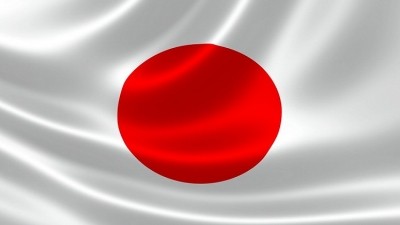Red yeast rice ‘unlikely’ to cause kidney injury, liver dysfunction or muscular adverse symptoms – latest review over 10-year period

These findings were published the month before the red yeast rice supplements scandal hit Kobayashi Pharmaceutical. The Japanese manufacturer had received complaints of kidney disease that were apparently caused by consuming its red yeast rice products, which have been linked to five deaths and more than a hundred hospitalisations across the country. In response, the company has halted all productions and recalled products that contained red yeast rice.
While the researchers only focused on the muscles and liver in this study, findings from their meta-analyses review also showed a low incidence of kidney injury due to red yeast rice.
Key research findings
From September 2013 (when the first case related to red yeast rice consumption was recorded) to 30 September 2023, researchers in Italy analysed the association between the use of red yeast rice extracts and the occurrence of musculoskeletal symptoms and liver dysfunction.
Data from the US Food and Drug Administration (FDA) adverse event reporting systems, as well as published meta-analyses of randomised clinical trials (RCTs) on red yeast rice, were reviewed.
FDA’s adverse event reporting systems are FAERS and CAERS. FAERS is a web-based tool that enables researchers to obtain information on adverse events reported to the FDA by the pharmaceutical industry, healthcare providers, and consumers, while CAERS is a database containing information on adverse events and product complaints submitted to the FDA regarding foods, dietary supplements, and cosmetics.
The researchers found that red yeast rice was unlikely to cause liver dysfunction or muscular adverse symptoms. The findings also showed a low incidence of kidney injury or change in kidney function due to red yeast rice.
“Musculoskeletal disorders associated with red yeast rice use accounted for 0.002% of all cases of musculoskeletal disorder reported in the FAERS database up to 30 September 2023,” wrote the researchers in Nutrients.
Data from CAERS showed similar trends and mirrored the meta-analyses of RCTs on red yeast rice, in which red yeast rice consumption was not associated with either liver dysfunction or muscular adverse symptoms.
“A low rate of muscle symptoms and liver dysfunction attributed to red yeast rice ingestion was also observed in the CAERS database, where only 34 cases of adverse muscle events and 10 cases of adverse liver events reported red yeast rice as the suspect product, while 19 cases of both muscle events and 10 cases of adverse liver events reported it as a concomitant product.”
Additionally, a meta-analysis of 20 RCTs involving 6663 patients (with a range of monacolin K from 2.4 mg up to 24 mg) reported that the incidence of kidney injury and liver abnormalities was less than 5% in both the red yeast rice and placebo groups.
Another meta-analysis of studies in which treatment with red rice yeast supplements (containing varying amounts of monacolin K – from 2 to 10 mg – along with additional ingredients) was administered over a period of 4 to 24 weeks showed no changes in liver or kidney function in the red rice yeast or control group.
In any case, there may be a genetic component that influences a person’s susceptibility to these side effects. Furthermore, red yeast rice can interact with other drugs, including other lipid-lowering therapies, which can be potentially harmful.
The researchers also pointed out that the monacolin content in red yeast rice supplements can vary from brand to brand and even from batch to batch.
As seen in the Kobayashi case, batch production could be affected by contamination as well. An inspection on Kobayashi’s second factory found what appeared to be potentially toxic puberulic acid that may have come from blue mould penicillium in red yeast rice produced between April and October 2023 at the Osaka factory.
Such factors can make it challenging to predict the effects on cholesterol levels and potential side effects.
Use with caution: Authorities
Red yeast rice has a cholesterol-lowering effect due to the presence of bioactive components monacolins, mainly monacolin K, which are chemically identical to statins, a class of prescription drugs used to lower cholesterol levels.
The use of red yeast rice as a cholesterol-lowering dietary supplement has raised concerns and regulatory issues, primarily because the monacolin K content can vary significantly between different products.
“The use of red yeast rice as a dietary supplement may therefore result in exposure to monacolin K at levels within the recommended therapeutic dose range of lovastatin, which is from 10 to 80 mg/day. Thus, consumption of red yeast rice can potentially lead to muscle-related symptoms similar to the muscle-related side effects of statin-based therapies, which can range from mild muscle discomfort to more severe muscle pain,” said the researchers.
In addition, monacolin K can have similar effects on the liver as statins, though a causal relation between any liver harm and statin therapy has never been confirmed.
Considering the available data, the European Food Safety Authority (EFSA) raised a warning related to the safety of red yeast rice supplement in 2022 and approved the use of monacolins from red yeast rice at doses of less than 3 mg/day.
“To date, the results of all available meta-analyses indicate a neutral effect of red yeast rice supplementation on parameters associated with liver or muscle dysfunction, an interesting observation considering that most studies were conducted with a dose of monacolin K greater than 3 mg,” said the researchers.
The FDA has also raised concerns about the safety and consistency of red yeast rice supplements and has issued warnings against its use as early as 2007.
“Overall, the data from randomised clinical trials and adverse event reporting systems minimise the risk of muscular and hepatic adverse events associated with the use of red yeast rice – a risk that is even lower considering the current indications from EFSA of 3 mg of monacolin K per day,” concluded the researchers.
However, the researchers cautioned that reports submitted to the FDA vary in the quality and reliability of the information provided. Some reports may lack relevant data, such as details about the individual’s concurrent medical conditions or concomitant use of other products or medications.
“Importantly, the information in these reports has not been scientifically tested for causality and cannot be used to estimate the actual incidence or risk associated with a particular product. In this context, we must recognise the lack of valuable tools for the assessment of causality,” said the researchers.
Source: Nutrients
DOI: 10.3390/nu16030444
“The Impact of Red Yeast Rice Extract Use on the Occurrence of Muscle Symptoms and Liver Dysfunction: An Update from the Adverse Event Reporting Systems and Available Meta-Analyses”
Authors: Giuseppe Danilo and Maciej Banach
Clinical Nutrition will be a major topic of focus at Growth Asia Summit 2024 – join us in Singapore to learn about market opportunities and glean insights from major industry experts. Find out more here.
















